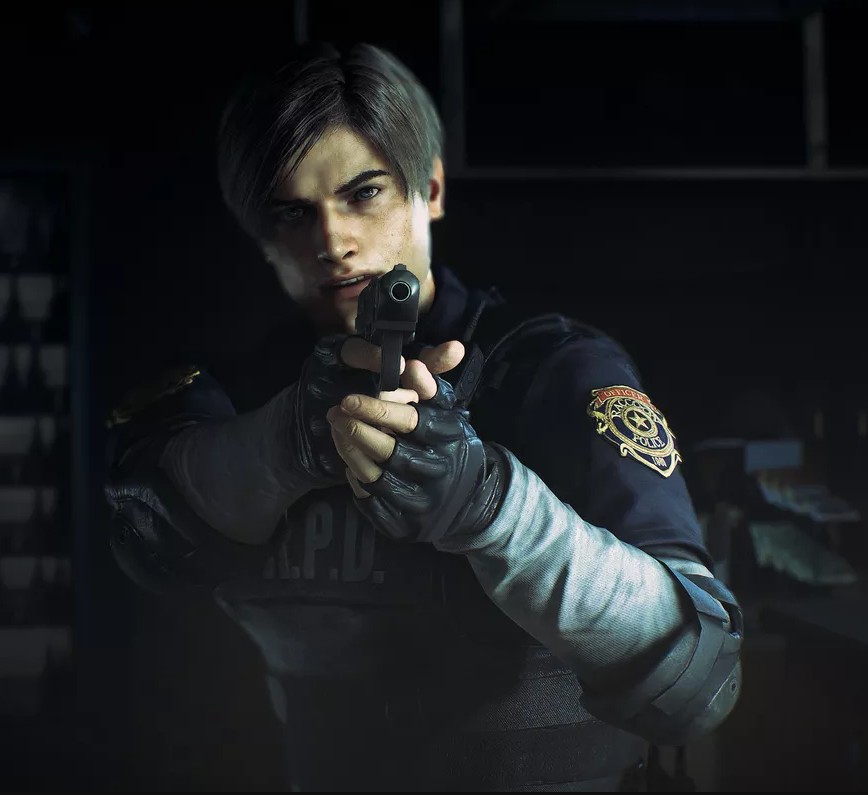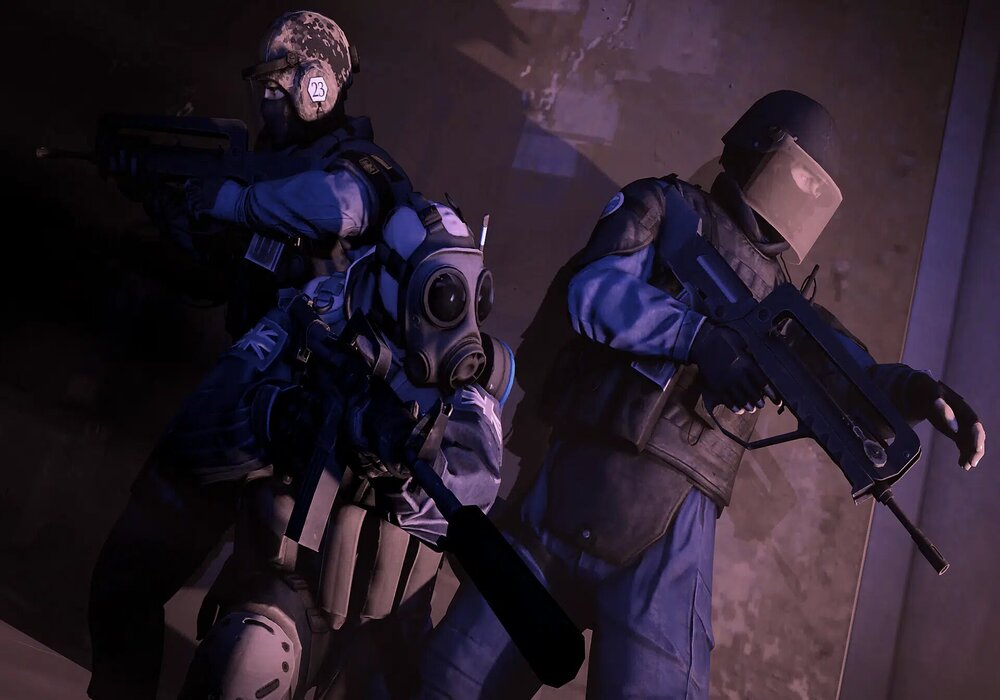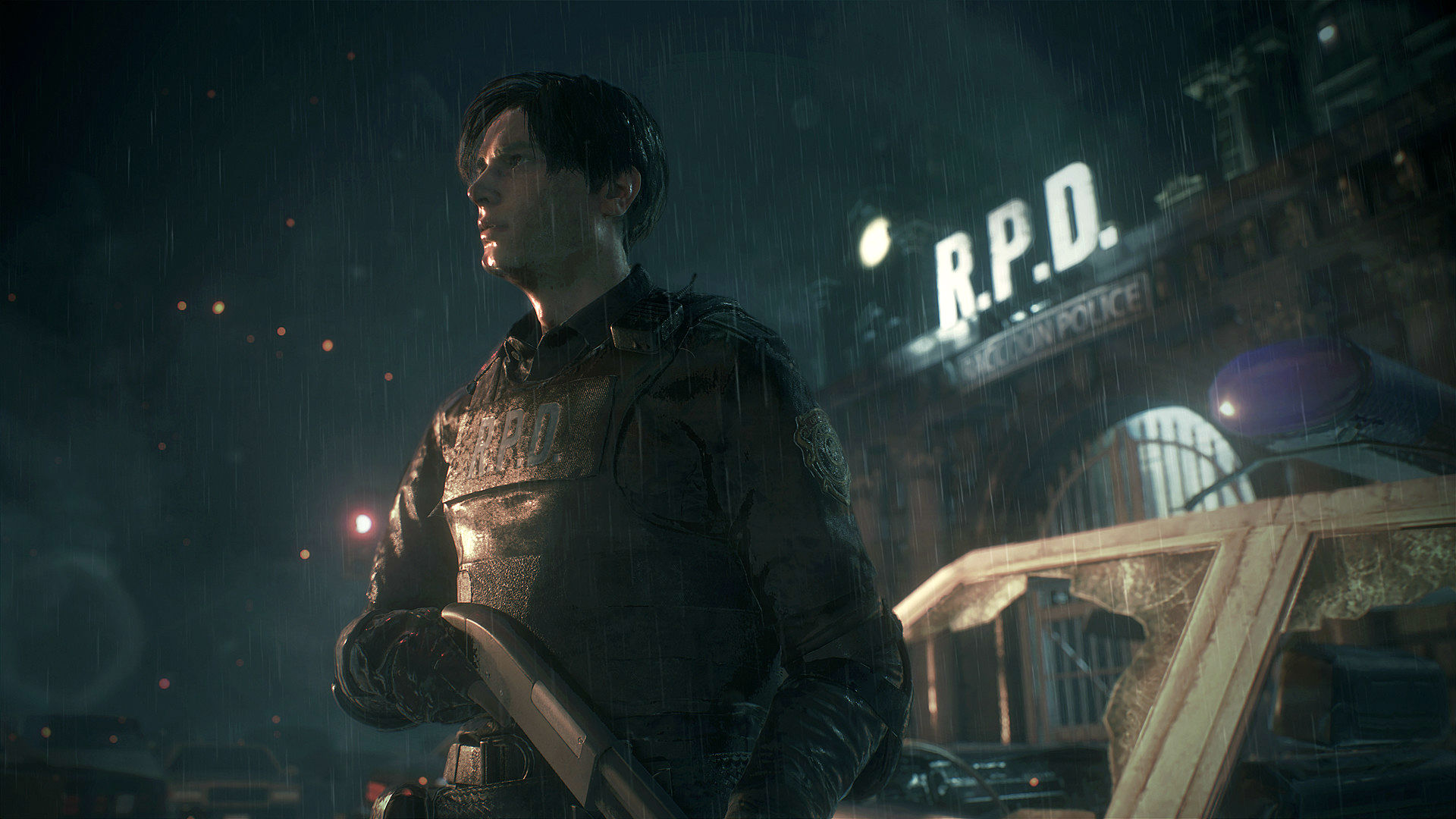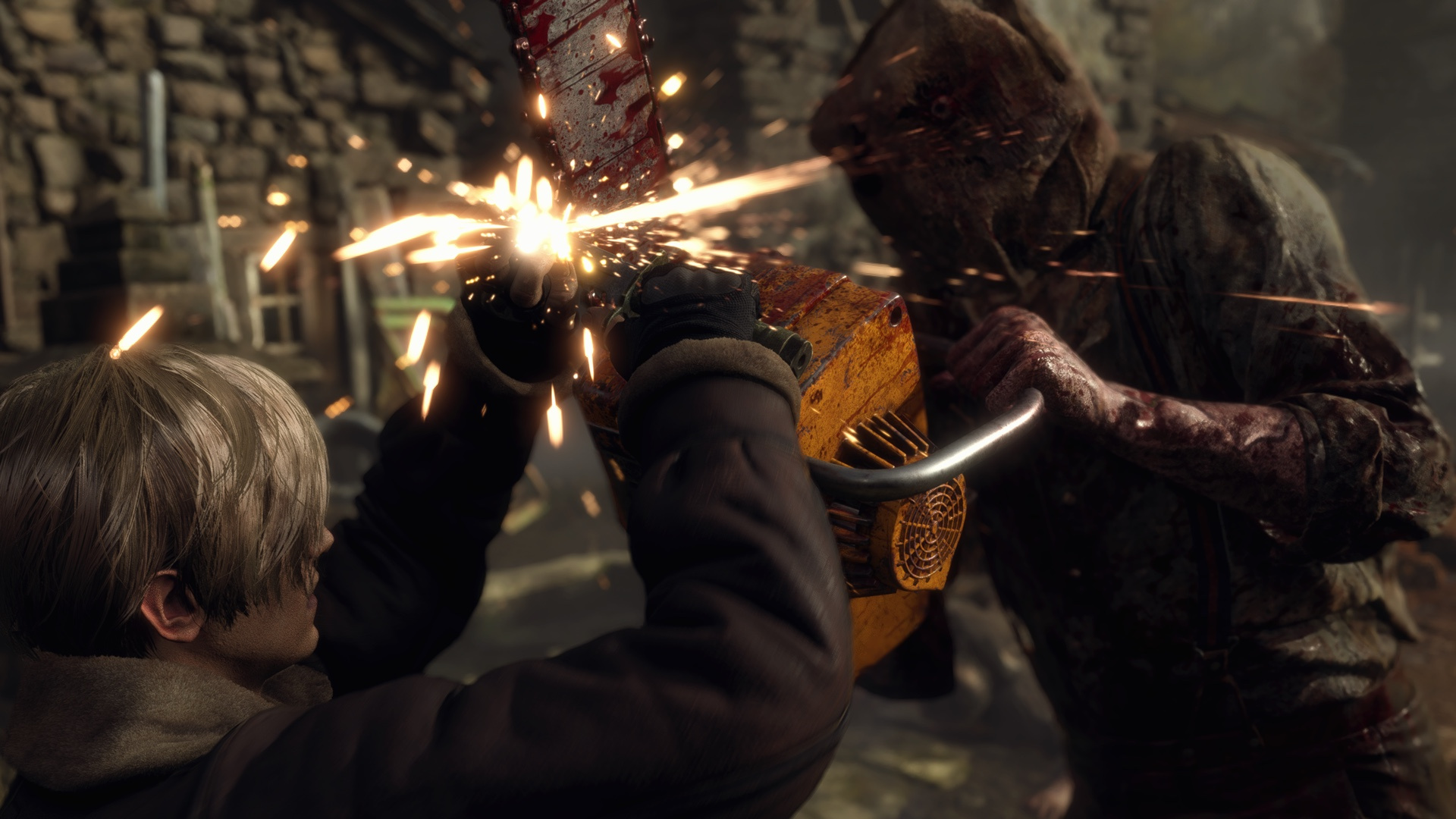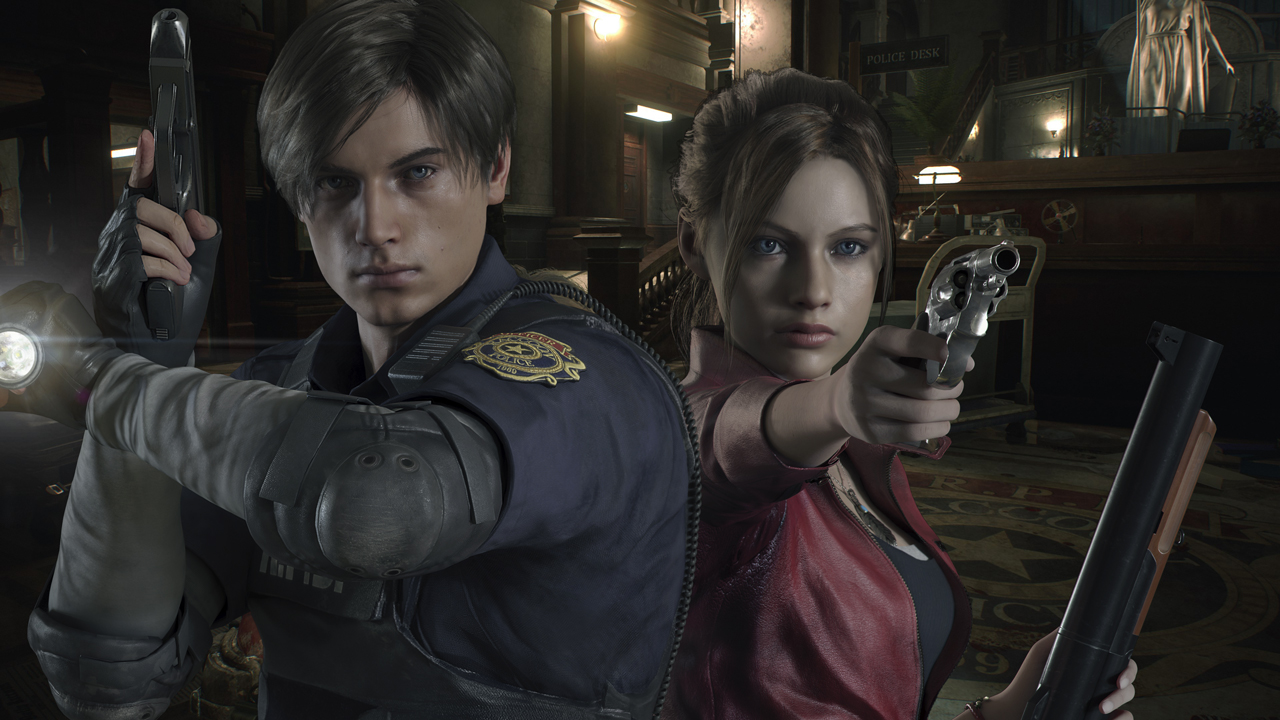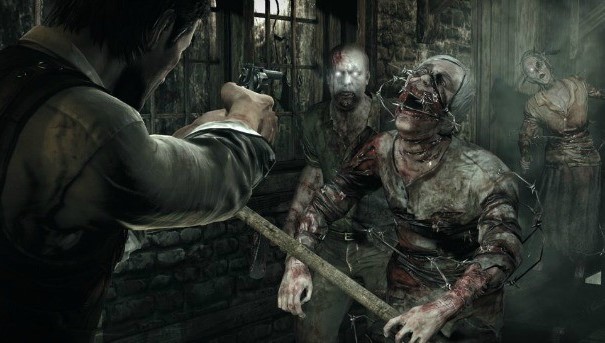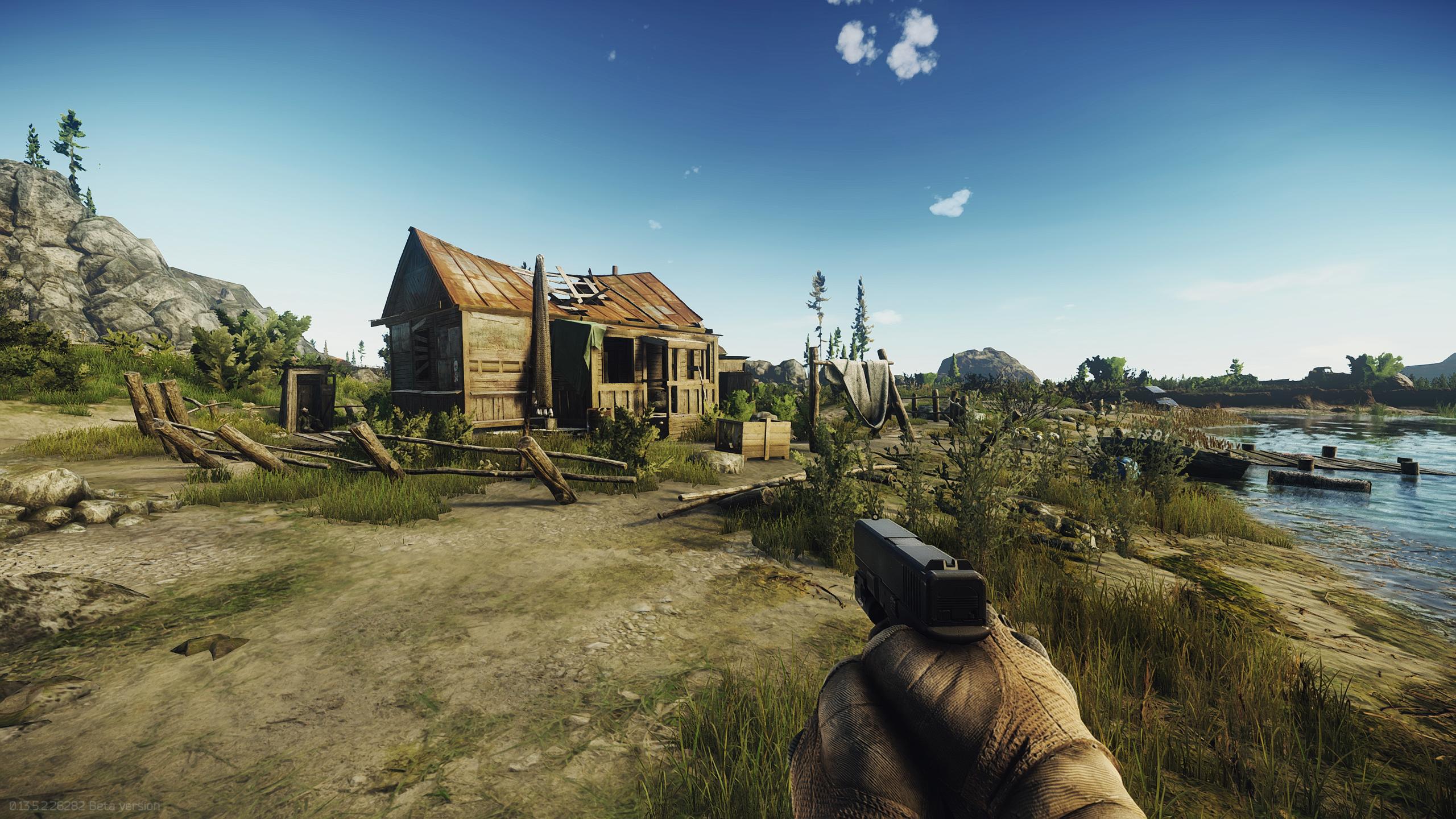
Are you one of the many gamers out there who’s still struggling to beat the admittedly extremely tough survival horror title, Resident Evil 2, once and for all? Well, what if I told you the one thing that you’ve probably been dying to hear… your inability to beat this game might not really be your fault after all!
For those of us that aren’t exactly the most technologically savvy people out there, it’s quite commonplace to shove the disc into our consoles and simply accept the game for what it is when we start it up, for better or for worse.
So, let’s avoid that by taking a look at the top 15 settings that could dramatically improve your Resident Evil 2 gameplay experience… Who knows, maybe a simple setting adjustment is just what you need to finally triumph over the horrors that plague Raccoon City.
1. Brightness
It’s only natural that, when we sit down to fully immerse ourselves in a horror game like Resident Evil 2, we want the game to be as dark as the game developers intended it to be… I mean, what’s the point of playing a horror game if the atmosphere isn’t, well, horrific? In saying this, there is such a thing as too dark and at times it can be hard to tell what’s intentional and what’s not.
Despite the fact that the game prompts you to adjust your brightness in accordance with whatever screen you’re gaming on with a sliding tool before the game even begins, it’s pretty tough to get this right for all players 100% of the time. In fact, a significant number of players reported that they did need to adjust their own brightness settings to give themselves a fighting chance of actually finishing this challenging title once and for all.
What’s this setting and why is it so important?
To reiterate, everybody’s specific set-ups are wildly different so unfortunately, there is no magical number that’ll work for all of you. Essentially, you simply want to adjust your brightness settings so that you’re actually able to clearly see your general surroundings while maintaining the dark, horrifying and eerie atmosphere that Resident Evil 2 is famous for.
How it gives you an advantage
Now, if you’ve trudged on through impossible darkness out of fear that you’ll ruin your immersion I totally understand where you’re at, but let’s be real here… in a game where precise shooting and movement is absolutely imperative to your success, how can you possibly survive these bloodthirsty zombies if you can’t even see them when they’re right in front of your face?
Trust me… if you’ve given up on this amazing game because you’re just not playing as well as you usually do and you don’t know why, bump up the brightness just a little bit and you’ll be wondering why you didn’t do this months ago.
How to Set:
- Open the Pause Menu
- Head to ‘Options’
- Scroll down to ‘Display’
- On the right-hand side of the screen, select ‘Brightness’
- Adjust your Brightness value using the tool provided, use left on your directional pad to make it darkness or right to make it brighter by increments.
2. Sound Effects Volume
If you’re anything like me, the insanely loud groans and screams from zombies, lickers and dogs alike made the game a lot scarier than it really needed to be.
What’s this setting and why is it so important?
That’s not to say that the sound design is anything but a technological marvel in this game… it’s directional after all, and that means that it’s designed to allow players to very clearly hear exactly where sounds are originating from… the slow shuffling of zombies, the ominous stomping of Mr. X… whatever it is, we need to find a happy medium between enjoying this robust sound design and not letting ourselves get deafened by these horrifying creatures.
How it gives you an advantage
On the subject of immersion, if the sound effects of enemies or even your very own guns are so loud that it takes you out of the moment entirely, you’d be doing a disservice to your overall gameplay experience if you didn’t lower this setting at least a tiny bit.
How to Set:
- Open the Pause Menu
- Head to ‘Options’
- Scroll down to ‘Audio’
- On the right-hand side of the screen, select ‘Sound Effects Volume’
- Use the sliding scale to adjust the volume of sound effects to your liking
3. Aim-Assist
This might come as a complete shock to some of you, but Resident Evil 2 actually comes with an aim-assist setting. On all difficulty settings besides ‘hardcore’, aim-assist is turned off by default… but with one simple click of the button, you can change this to make your experience a hell of a lot less arduous.
What’s this setting and why is it so important?
Put simply, toggling auto-aim to ‘on’ will allow Leon and Claire to more easily lock onto enemies automatically. Compared to having to line up all of your shots with masterful accuracy to best these monsters yourself, this’ll make your journey through the Raccoon City’s police station a walk in the park (at least comparatively!)
How it gives you an advantage
Suffice to say, if you’re interested in experiencing the story by mainly relying on your own movement and general inventory management skills, aim-assist might be the perfect choice for you. Think about just how valuable locking onto your target with ease truly is— saving yourself those precious few seconds really can make all the difference when it comes to survival horror.
How to Set:
- Open the Pause Menu
- Head to ‘Options’
- Open the ‘Controls Settings’
- Select the ‘When Aiming’ Option
- Change Aim Assist from off to on
4. Reticle Colour
Sometimes even the most simple of setting adjustments can make a world of difference when it comes to improving your general performance level. If you’re struggling to land your shots, have you thought about changing your reticle or sight colour to something that stands out a little bit better against the game’s general colour scheme, such as green?
What’s this setting and why is it so important?
In my honest opinion, the colour of your reticle or sight is deceptively important. When you can clearly see your crosshair at all times, it’s so much easier to hit the weak spots of general enemies and bosses alike at those absolutely critical moments.
How it gives you an advantage
If you thought that this setting was only made for people who suffer from partial blindness or colour blindness exclusively, you’re mistaken. It’s hard to notice exactly how much time you might be losing to not being able to visualise your own crosshair clearly enough or quickly enough.
In a game like Resident Evil 2 where every single frame matters, the split second that it might take you to recognise your own crosshair before lining it up for a precision shot can be the difference between success and that fated game-over screen.
How to Set:
- Open the Pause Menu
- Head to ‘Options’
- Scroll down to ‘Display’
- On the right-hand side of the screen, select ‘Reticle Settings’
- From the menu, choose between: White, Green, Blue or Red
5. Camera Speed (when aiming)
Now, if you’re a seasoned gamer, you’re probably well aware of how very important controller sensitivity can be when it comes to competitive gaming, but this can be just as important to consider when it comes to single-player experiences like Resident Evil 2’s 2019 remake.
What’s this setting and why is it so important?
While optimal sensitivity is subjective at the end of the day, if you’re somebody who simply accepts the default sensitivity settings, there’s a high likelihood that you’re not actually untapping your true gaming potential because of this very reason!
Aiming is arguably the most important factor that separates players when it comes to not just survival horror games, but any and all gun-heavy titles under the sun. You want to be able to hit enemies as precisely and as consistently as you possibly can, and adjusting your sensitivity settings to do just that is absolutely paramount when it comes to your individual success.
How it gives you an advantage
All in all, you want to be able to both quickly move your camera in order to dispatch your enemies swifty while ensuring that it’s still slow enough to correct your aim as the enemies themselves move and adjust in response to you.
If you’ve never put the time aside to figure out your best-fit when it comes to controller sensitivity, you’re truly doing a disservice to yourself in not just this one specific game, but in a great majority of modern games in a similar spirit.
How to set:
- Open the Pause Menu
- Head to ‘Options’
- Scroll down to ‘Camera’
- Scroll down to ‘Camera Screen When Aiming’
- Use the sliding scale to adjust your camera screen to your liking
6. Camera Wobble
While camera wobble can enhance the gameplay experience for many of us players, there’s a sizable number of us that suffer from mild, moderate or even severe motion sickness when we play certain games— if this sounds like you, then what’s the harm of taking a few seconds to test the game without camera wobble to see if that was your problem all along?
What’s this setting and why is it so important?
In plain terms, camera wobbling is a feature in many modern games that gives us tactical, visual feedback during high-intensity moments (particularly when it comes to certain combat situations). Basically, when our camera wobbles, the player’s being subtly informed that they’re in serious danger and they’ve gotta think fast to get out whatever crazy situation they’ve found themselves in.
In saying this, it’s far from uncommon for gamers to suffer from some degree of motion sickness when they’re playing certain games, and a lot of people out there have actually claimed that this is particularly problematic for them whilst playing Resident Evil 2!
How it gives you an advantage
Whether it’s something that you experience immediately or only after a long session, the simple act of turning off camera wobbling might actually help you to play some games for a lot longer and therefore, to the very best of your ability.
Even if you’re not entirely sure if motion sickness is affecting you or not but you do notice that the game gets a lot more difficult after an hour or two for some unknown reason, you should really consider testing this out and playing without camera wobbling just to see if this makes a meaningful difference for your overall gaming experience.
How to set:
- Open the Pause Menu
- Head to ‘Options’
- Scroll down to ‘Camera’
- On the right-hand side of the screen, select ‘Camera Wobble’. There, set camera wobble to either ‘off’ or ‘on’
7. Field of View
If you’ve never really heard of this setting before, ‘field of view’ simply refers to exactly how much of your surroundings you’re able to visually observe in a single frame.
What’s this setting and why is it so important?
If you’re still a little bit confused, in simpler terms, it allows you to use the game’s camera to either zoom in or zoom out, adjusting just how much of the world around you exists in each and every frame or still shot. For instance, if you turn the field of view down, the camera will zoom in further with a greater focus placed on your character rather than their surroundings.
How it gives you an advantage
If you’re finding that you’re unable to see an approaching enemy before it’s too late, perhaps you’re experiencing an issue as it relates to your field of view setting. Try turning your field of view up to better see more of your surroundings as you play.
How to set:
- Open the Pause Menu
- Head to ‘Options’
- Scroll down to ‘Camera’
- On the right-hand side of the screen, select ‘Field of View’
- Use the sliding scale to adjust the Field of View to your liking
8. Controller Speaker
Whether you want sound to emit from your controller or not is purely up to personal choice. For some players, this adds to their general immersion greatly but for others, it does just the opposite.
What’s this setting and why is it so important?
Turning on the controller speaker setting isn’t any more complicated than it sounds… this means that some sounds, such as enemy sounds, will play from your controller as well as your main speaker or sound set-up.
How it gives you an advantage
If you’re finding that you’re not hearing the enemies approaching as clearly as you’d like, then you should certainly ensure that your controller speaker setting is set to ‘on’.
On the other hand, if you find yourself getting consistently jumpscared by the hideous enemy sounds that are ringing from your controller, I can tell you from personal experience that the Resident Evil 2 experience will be a lot less horrifying if you turn off your controller speaker. Again, there’s really no right or wrong way to go about this, it’s completely up to you and your personal preferences.
How to set:
- Open the Pause Menu
- Head to ‘Options’
- Scroll down to ‘Audio’
- On the right-hand side of the screen, select ‘Controller Speaker’
- There, set your controller speaker to either ‘off’ or ‘on’
9. Vibration Function
In a very similar spirit to the controller speaker setting, some people absolutely swear by having your vibrator function set to ‘on’ while others absolutely hate it… if you didn’t know that this was even an option, deciding which of these two camps that you belong to will absolutely optimise your overall gaming experience.
What’s this setting and why is it so important?
When you take a hit from an enemy and your controller vibrates, this can either add or detract from any given player’s general immersion dramatically. While intensifying the atmosphere of danger to some, a vibrating controller really takes others out of the moment entirely.
How it gives you an advantage
Speaking from personal experience, as a huge fan of horror that happens to scare very easily, turning my vibrator function off was instrumental in allowing me to actually beat this terrifying game…
…It might sound a bit silly, but the vibration of the controller startled me to an unnecessary degree. In saying this, my roommate absolutely loved the feature and couldn’t understand why I’d choose to turn it off at all… it’s really just up to you!
How to Set:
- Open the Pause Menu
- Head to ‘Options’
- On the right-hand side of the screen, select ‘Vibrator Function’
- There, set your vibrator function to either ‘off’ or ‘on’
10. Subtitles
It’s not lost on me that most people are probably aware of this particular setting, but for the few of you out there that might still be unaware that you can choose to turn settings on or off at all, its importance absolutely does warrant a place on this list.
What’s this setting and why is it so important?
In a fast-paced game like this, it’s almost expected that we’ll miss a line or two of dialogue during intense sequences and it goes without saying that we don’t want to miss a single line of dialogue lest we miss a critical piece of critical information or an important narrative component.
How it gives you an advantage
If you’re struggling to follow exactly what our characters are saying amidst the chaos of Raccoon City, simply turn the subtitles on so you can read along instead of straining to hear them between gunshots, lickers and zombie squeals.
How to Set:
- Open the Pause Menu
- Head to ‘Options’
- Scroll down to ‘Language’
- On the right-hand side of the screen, select ‘Subtitles’
- There, turn subtitles either ‘off’ or ‘on'
11. Tutorials
If you’re a longtime fan of Resident Evil and you didn’t know this already, players that are already familiar with the story and gameplay mechanics can simply turn tutorials off rather than having to go through it all over again.
What’s this setting and why is it so important?
While tutorials are incredibly important for new players, when you’re already more than familiar with the world of Resident Evil 2, they can become frustratingly repetitive and tiresome. If this sounds like you, don’t suffer through it again… simply head to your settings and turn these nagging tutorials off.
How it gives you an advantage
Quite obviously, this really won’t change your gameplay experience or general performance level. However, you’d be surprised to know just how many second playthroughs come to an abrupt halt because of repetitive tutorials alone. Don’t let this stop you from enjoying the game for a second, third or even fourth time!
How to Set:
- Open the ‘Pause Menu’
- Head to ‘Options’
- Scroll down to ‘Display’
- On the right-hand side of the screen, select ‘Tutorials’
- There, turn tutorial text to either ‘off’ or ‘on’
12. Controller Settings
The remake to Resident Evil 2 offers you three different controller layouts, called ‘controller settings’. Referred to as Type A, B or C, it’s absolutely worth your time to head to the menu and check these out.
What’s this setting and why is it so important?
Controller Settings are specific controller layouts that offer players distinctive controller layouts: Type A, B and C. These controller layouts will change the specific inputs necessary to perform a quick turn, open your inventory and even run!
How it gives you an advantage
Rather than forcing yourself to adjust to the game’s default controller settings, why not check out all of your controller settings options to figure out what’s optimal for you and your unique preferences as a gamer?
How to Set:
- Open the Pause Menu
- Head to ‘Options’
- Select ‘Controls’
- Select ‘Control Settings’
- Next to ‘Control Type’, choose from: Type A, Type B or Type C
13. Auto-Reload
Just as the feature’s name implies, the auto-reload setting will allow Leon or Claire to reload their gun as soon as the clip is emptied, rather than forcing the player to manually reload their guns.
What this setting is and why is it important?
In my opinion, auto-reload is a nice quality of life adjustment. After all, the world of Resident Evil 2 is chaotic enough as it is, and it can be difficult to remember to reload your gun before sprinting away from the enemy at the best of times.
How it gives you an advantage
Instead of realising that you didn’t have your character reload their gun as you’re sprinting to the corner in any number of the police station’s accursed rooms, just to waste those valuable seconds reloading the damn thing before it’s too late, why not turn on auto-reload and have them automatically do it for you? I mean, is there really a time when you don’t want your gun to be reloaded in the Resident Evil universe?
How to Set:
- Open the Pause Menu
- Head to ‘Options’
- Select ‘Controls’
- On the right-hand side of the screen, scroll down to ‘Auto-reload’
- There, set ‘auto-reload’ to either ‘off’ or ‘on’
14. HUD (heads-up display elements)
For the more hardcore players out there that want to mirror the experience that they had playing the original Resident Evil 2 back in the day, turning off the HUD could enhance your experience playing this masterful remake dramatically.
What’s this setting and why is it so important?
Now, this might sound like a hellish choice to make for many of you, but removing the HUD will mean that your display will no longer show elements such as your crosshair or even your ammo counter.
For players that are familiar with the 90’s title, this lack of information was an essential aspect of the scary atmosphere of the game, and with a simple adjustment to your in-game settings you can maintain this atmosphere in the modern remake of the game.
How it gives you an advantage
Turning off your HUD will give you a disadvantage if anything, but for veteran players who are looking for a hardcore 90’s-esce experience, playing without the HUD is certainly advantageous to their overall enjoyment!
How to Set:
- Open the Pause Menu
- Head to ‘Options’
- Scroll down to ‘Display’
- On the right-hand side of the screen, scroll down to ‘HUD’
- There, set in-game HUD elements to either ‘off’ or ‘on’
15. HDR
HDR, or ‘High Dynamic Range’, is a visual feature that is becoming increasingly common in more modern, high-budget titles like this one. Depending on your specific gaming set-up as well as your personal preferences, turning on the HDR setting could very well improve your gameplay experience tenfold.
What’s this setting and why is it so important?
If you’re unfamiliar with this fairly new setting, High Dynamic Range simply refers to the range between the brightest brights and the darkest darks that the video game can possibly display. By turning this on, your game will display its brightest elements more brightly and vice-versa.
How it gives you an advantage
While HDR doesn’t give you any advantage when it comes to your gameplay performance per se, depending on the capabilities of your television or gaming monitor, turning on HDR will improve your visual experience astronomically.
However, it’s worth saying that for many players who might not own the newest or most advanced screen, HDR can wash the colour palette out and make your visual experience dramatically worse; suffice to say, it’s worth testing out whether your gaming set-up is right for HDR either way.
How to Set:
- Open the Pause Menu
- Head to ‘Options’
- On the right-hand side of the screen, select ‘HDR Mode’
- There, set your HDR Mode to either ‘off’ or ‘on’






